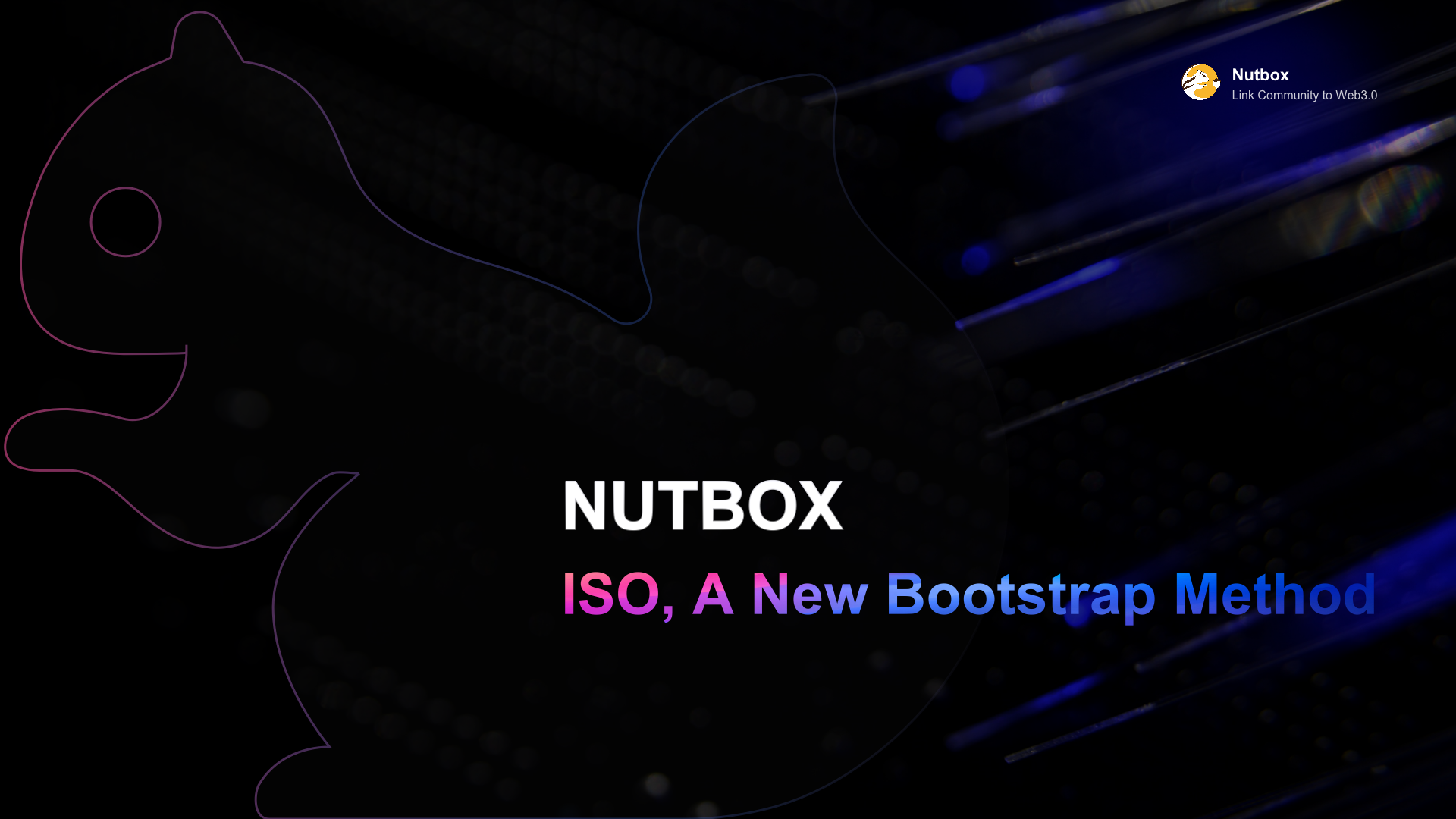
The proliferation of DAOs cannot rely on just one or two events, but requires a new method of Bootstrapping.
Just as the PoW (Proof of Work) mechanism directed the launch of Bitcoin in 2009, PoS (Proof of Stake) brought the rise of many Altcoins in 2013-2014, and ICO promoted the development of the public chains in 2016-2017, and Liquidity Mining ignited the DeFi Summer in 2020-2021.
The new era calls for new Bootstrap approaches, and ISO(Initial Staking Offering) is a Bootstrap approach that directs the large-scale proliferation of DAOs.
01 What is ISO
Initial Staking Offering (ISO for short) is a way of staking to issue tokens.
Compared with the PoS mechanism and Liquidity Mining which use local crypto assets as collaterals, ISO takes stakable Tokens (PoS Chain or Protocol Tokens) as collaterals.
Community members transfer the usufructs, voting rights, dividend rights, etc. of the stakable Token to the community through delegation, voting and etc. In return, community members receive compensation (usually community tokens) commensurate with their contributions, based on an algorithmically defined model. Correspondingly, the community can receive Staking Reward of staked tokens to buy back community tokens or use them for other matters that promote the development of the community.
02 The Advantages of ISO
ISO is a Staking-based Bootstrap approach, which directs the community to achieve the cold launch of DAO through the most basic economic principle of staking. It has the following advantages:
- Lower Risks: Community members do not need to purchase crypto assets as collaterals, but only need to support the community by staking or voting with their PoS Tokens or other stakable Tokens. Since the staked assets are always in the hands of community members, this avoids the risk of asset loss due to contract or problems in the community with the staked Token.
- DAICO: Community members can cancel the delegation or vote at any time, keep the ownership of the staked Tokens forever, and choose to increase or decrease their support to the community as the project develops, realizing Vitalik's "DAICO" concept.
- Lower Participation Cost: Because ISO greatly reduces the risk of asset loss faced by users, the psychological cost for community members to support the community is lower, and the community can receive wider support in this way.
- Multi-chain Support: The ISO protocol of staking assets to support PoS Chain and project Tokens with the Stake mechanism. The community can launch ISO on multiple PoS chains or projects (more than 200). At present, the global Staked assets are as high as 200 billion US dollars, with stakers close to 4 million, and the amount of annual Staking Reward also exceeds 10 billion US dollars. Assets and users from 100+ PoS Chains and 100+ projects using the Stake mechanism have created conditions for the large-scale proliferation of DAOs.
03 The Development History of ISO
ISO is nothing new, it has a long history.
SCO Platform – NULS Ecosystem
Nutbox has been experimenting with ISO since 2020, and launched Nutbox Peanut (A Staking DAO) in October 2020 using a ISO approach. Steem users can delegate their STEEM POWER (SP) to Peanut to receive PNUT rewards from Peanut, while the Peanut community uses the delegated SP to earn Staking Rewards.
At present, Peanut has been developing continuously for more than a year, receiving 1.85 million SP delegation, with 620 fans from South Korea, Southeast Asia, China, Europe the United States and other countries. Peanut has also established the DAO Fund, and allocate the DAO Fund through the Peanut Proposal System, as well as achieving decentralized governance.
Crowdloan – Polkadot Ecosystem
The most influential ISO emerged in the Polkadot ecosystem, which was first launched on Kusama in 2021. Polkadot/Kusama members can use DOT/KSM to stake on Polkadot/Kusama parachains to receive parachain tokens, and parachains gain the chance of getting a Polkadot/Kusama slot.
At present, 9 parachains have been launched in the Polkadot ecosystem and 11 parachains are being launched, whereas the numbers in the Kusama ecosystem are 22 and 3 respectively. The combined market value of Polkadot/Kusama parachains launched in this way has reached billions of dollars, while 23% of DOT and 32% of KSM are staked through Crowdloan.
Other ISO
As we enter 2022, more and more public chain ecosystems have launched ISO platforms to direct the launch of ecological projects. Among them, the most prominent are Aurora and Astar.
Aurora helps users unlock Staking Rewards by combining ISO with Near's Proof-of-Stake 2.0. On the other hand, Astar launched DApp Staking, which deeply binds ISO with developer incentives.
Under such background, Nutbox has developed a unique ISO module based on the experience gained by Nutbox Peanut and combined with the staking mechanism of Steem/Hive (and is developing the corresponding ISO module in combination with Polkadot's Crowdloan and Astar's DApp Staking). In the future, Nutbox will launch the ISO module on various PoS Chains or projects using the Stake mechanism to help their ecological communities to launch and achieve the large-scale proliferation of DAOs.
ISO Related Articles
《From PoW to Crowd-Staking, A Few Bootstrapping Methods and their Evolution》
《Crowd-Staking as a Bootstrap Method》
《Crowd-Staking, a Project Launching Method that Brings Billions USD Worth of Funding》